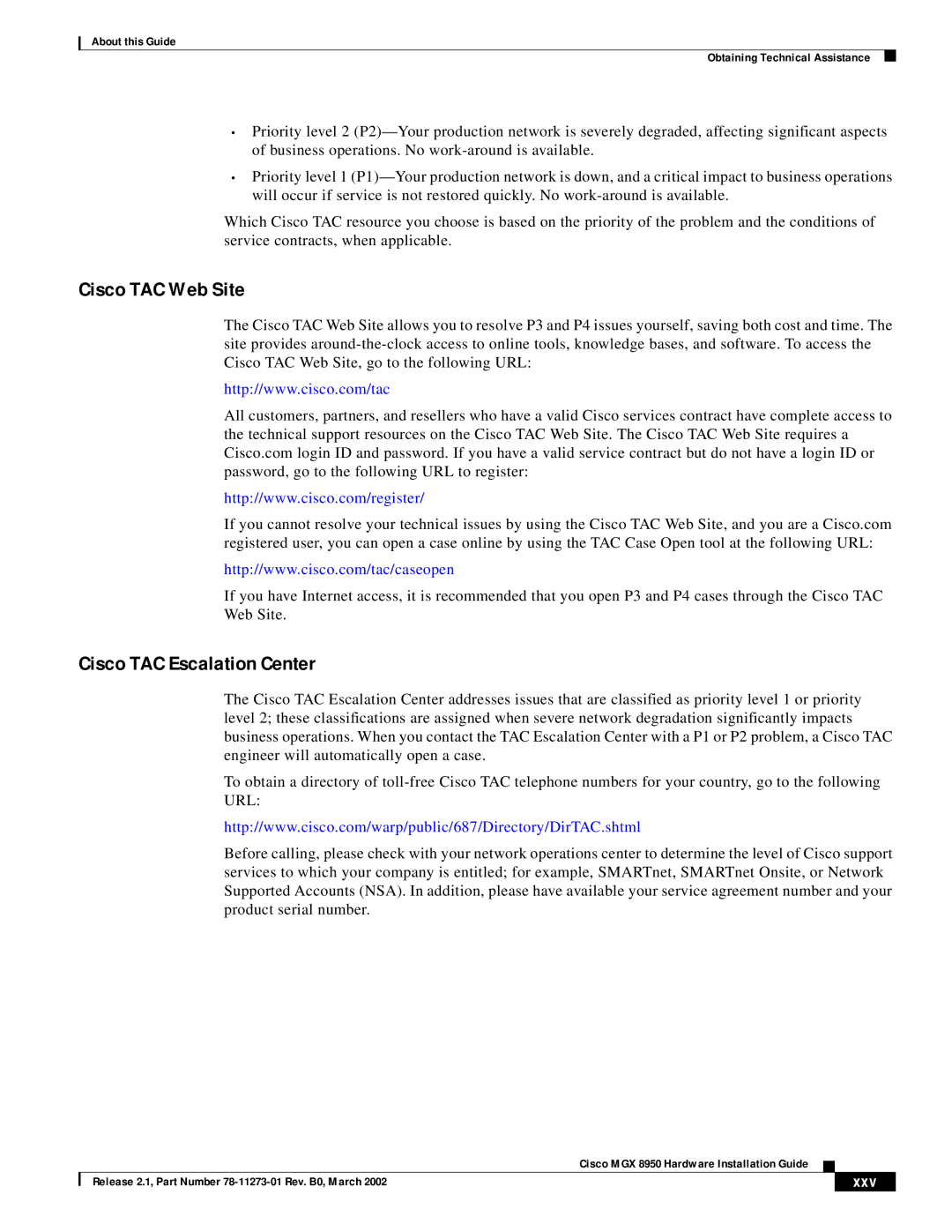MGX 8950 specifications
The Cisco Systems MGX 8950 is a high-performance gateway that has become a significant player in the telecommunications sector. Designed for service providers, this versatile platform supports a wide range of communications protocols and services, making it a robust choice for voice, video, and data applications. One of the primary features of the MGX 8950 is its modular architecture, which enables operators to scale and adapt their systems according to changing demands. This flexibility allows for the integration of various network technologies, guaranteeing that service providers can evolve their offerings without significant infrastructure overhauls.The MGX 8950 supports a comprehensive array of media processing capabilities, including voice over IP (VoIP), video conferencing, and multimedia applications. With its advanced signal processing capabilities, the platform is engineered to manage a considerable number of concurrent calls, ensuring seamless communication during peak usage times. Additionally, the MGX 8950 is equipped with quality of service (QoS) functionalities, which facilitate reliable transmission and enhanced user experience even in congested network conditions.
Moreover, the MGX 8950 integrates advanced technologies such as Session Initiation Protocol (SIP) and H.323, enabling interoperability with a vast array of devices and networks. This compatibility supports the convergence of multiple services, allowing service providers to offer integrated solutions to end-users. The device also employs a robust security architecture, incorporating features such as encryption and authentication to safeguard communications against potential threats.
In terms of management and monitoring, the MGX 8950 comes with a user-friendly interface that simplifies configuration, troubleshooting, and performance monitoring. Operators can quickly assess system health and performance metrics, ensuring that issues are addressed before they impact service delivery. Furthermore, the system supports automation through programmable interfaces, enhancing operational efficiency.
Overall, the Cisco Systems MGX 8950 is a powerful telecommunications solution that stands out due to its modularity, support for diverse communication protocols, and strong emphasis on quality, security, and management. Service providers looking to enhance their voice and multimedia services would find the MGX 8950 a fitting addition to their network infrastructure, ensuring they remain competitive in an ever-evolving digital landscape.
